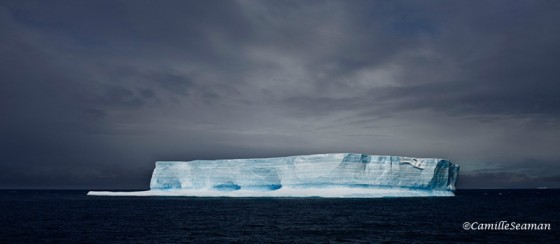
I first learned of Camille Seaman from a mutual friend who invited me to come hear her speak at the Annenburg Space of Photography. I was immediately impressed by her presence and photography; not only is Camille’s work outstanding, but she is a great storyteller and a fascinating speaker. I highly recommend making the effort to go to one of her presentations.
The idea behind featuring these amazing photographers is to inspire you on your own journey. Camille’s story is very inspirational, showing that it is possible, with hard work, determination, and the courage to risk it all, to make it as a professional photographer in this new digital era. I was honored that she took the time out of her busy schedule to do this interview.
Camille Seaman is a widely published photographer based in California. After studying photography in college and working under the guidance of top photographers such as Jan Groover and Steve McCurry, she one day decided to be a professional photographer herself. Throughout her career, Camille has photographed all over the world, and in the past decade has focused her work on the polar regions. Her exhibit “The Last Iceberg” has appeared in museums and galleries in the United States and Europe, and her work has appeared in National Geographic Magazine, TIME, The New York Times Sunday magazine, Newsweek, Outside, Men’s Journal, PDN, and American Photo among many others. Camille has won numerous awards including National Geographic Award in 2006 and the Critical Mass Top Monograph Award the following year, and most recently, she was named a TED Senior Fellow for 2013. You can see her past Ted Talks here
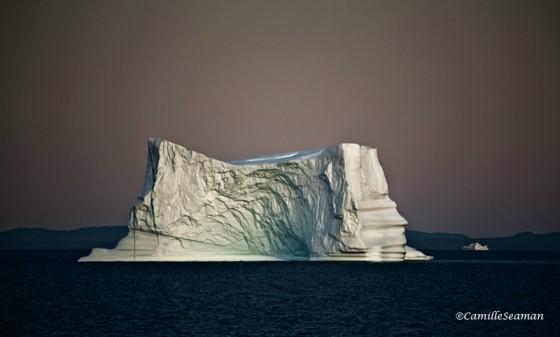
1. How long have you been a photographer and what first led you on this journey?
I have always made photographs and used a camera, but it was not until I was 32 years old that I felt a calling to use the camera as my creative voice. The call for me to pick up the camera with a new and focused attention came while I was sitting on my living room couch watching a news program which was broadcasting a live airstrike against some middle east target. In that moment I had reached my own tipping point and felt activated to “do something” to counter the negativity and cynicism that I heard all around me. I knew in that moment that I would use my camera to document my experience on this planet; through this means I would communicate how awesome and wonderful this planet is and how very lucky we are to have this earth as our home. I also wanted to show that life itself is a very special and unique opportunity that should not be squandered.
2. Tell us a little about your photography and if you switched directions or became more focused on a particular subject later in your career?
It feels impossible to think of something as later in my career since I have not been doing this for very long. From the beginning a profound sensitivity to quality of light became part of my visual voice. I have always photographed what I am personally curious about; I have never done “assignments” or worked under anyone else’s direction. This personal sense of exploration and quest have been strong drivers in my work, and my heritage as a Shinnecock Indian has also shaped my lens. I do not have any grand ideas or plans, I simply ask the universe which way it wants me to go and allow the doors to open. I find this is much more exciting and surprising way of not just choosing projects but also living my life. The outcome is always many times more awesome and meaningful than anything I could have envisioned for myself.
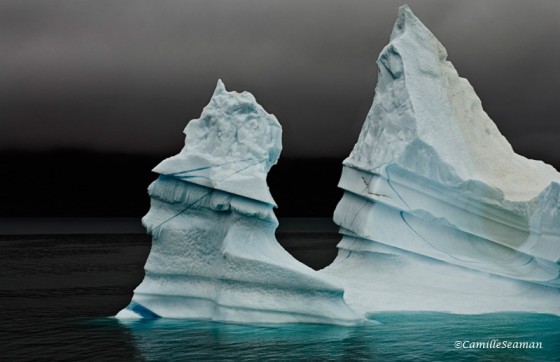
3. What was the best decision/risk you made that seemed to launch you towards your goal as a photographer?
The first step is always the most difficult and requires the most courage. To call oneself a photographer takes confidence, to actually go out and make photographs and make the effort to get them seen by others takes that to a whole other level. What makes me any different from someone who reads this and wonders how do I get to do those amazing things? How do I make it work that I can BE a photographer? The answer is simple: if you are not willing to risk it all, you do not want it bad enough. That simple sentence contains many answers as to what it takes to go the distance, to make important and relevant work while staying true to yourself which in turn keeps your furnace of passion burning. Too many people are caught up with this idea of security and if security is important to you, you will only be willing to take so many risks before you reach your threshold and say “I can’t do it” which really means I am not willing to risk it. I know I have only everything to gain, and if I fail, I pick myself up and try again. I am a creative person, I am a powerful woman and feel very capable of doing many things, and those things that I do not know how to do I know I can learn. The world unfolds before me and I keep myself open to the possibilities.
4. What is one of the best experiences (in the field) you have had as a photographer?
Everyday that I am out there in the world somewhere with my camera is a great experience, I remind myself after the long flights, bad food and other tedious occurrences that in the end I am being given access to the potential for something amazing to happen right before my eyes. I have witnessed things that were so beautiful, so sacred, so awesome, so amazing that I felt truly honored to be given the responsibility to witness and document the moment. Choosing just one great experience would be impossible.
5. Can you share with us the most memorable moment (successes) in your career that made all the hard work and challenges worth it? It’s ok to share a few.
In the end it is the small things that make the most impact. Sure, it was a life’s dream come true to have my work published in National Geographic Magazine, but it was much more rewarding to see how proud my daughter was of my achievement. I don’t think I have been doing this long enough to have to remember very far back about anything in my career, it is all still so new and recent. It is wonderful to be recognized by my peers, but again it is very moving when someone sends me an email or a letter thanking me for doing what I do. I realize then that what I do has an impact and that one person really can make a difference and that what we all contribute IS indeed very important to the greater whole.
6. Can you share with us some of the biggest challenges or changes in your photography business?
I learn as I go, and like many I learn the most from my mistakes. You cannot know that a gallery will not pay you for work that they sold, you must trust that they are in business because of good practices and ethics, but this is not always the case. I learned that it is valuable to contact the other artists that the gallery represents, ask the artists about their experience with the gallery BEFORE you agree to have the gallery represent you, if you are having a big show, make sure to write down all the details about what the expectations are for you as the artist and they as the gallery in regards to who will cover the cost of expenses. I have been very fortunate in that I have from the beginning had galleries approach me, magazines contact me and so on. It is a great position to be in and I do not take it for granted, professionalism is understated these days. It is so important to have you *!@$! together BEFORE you put yourself out there as a professional; if you cannot send off an image that a client needs in under five minutes formatted to their requirements with and invoice attached, you are not ready.
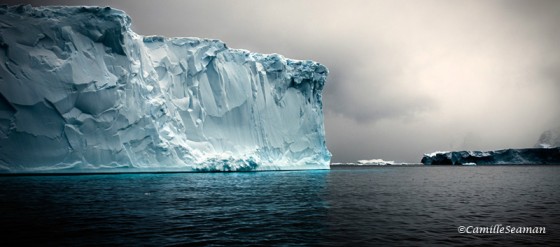
7. Who has been an inspiration for your photography and how do you stay inspired?
There are too many photographers that personally inspire me. I love photography books and think it is a good practice to look at other visual works – not just photography – to inform your visual self. I think it is so very important to know what you like as well as what you do not like – looking at other work is part of figuring that out.
8. Is social media important in promoting your work? How much time daily/weekly do you invest in it?
People know of my work in countries that I cannot even read the language. This would not have happened so quickly in my career without the internet, blogging, tumblr, social media etc. Many photographers are afraid to put their work on the internet for fear it will be stolen. I can guarantee it will be stolen and used without your permission, but I cannot allow that to keep me from the incredibly valuable exposure that is afforded to me by this process. In the end I believe the work will find it’s way back to me – to the source. I have had to use lawyers to go after people using my work for profit without my permission; it is and will always be part of the process unfortunately. There is only one me, and I know that I am a valuable commodity so anyone who wants the “real deal” will find me. After all, I do not do this to have my images sit in a box under my bed. As far as how much time I spend devoted to making it happen I would say I give it 10-30 minutes a day. Much of that time is spent checking to see who is posting, blogging, etc. my images, where they are being used, what is being said about them and making sure my name is always associated to my images.
9. What is the most valuable business advice you can give to a photographer just starting out on this journey?
Know where you want to go. Sit down and close your eyes in a quiet place and just start to “see” where your work is – is it in a local cafe? a major museum? a magazine? newspaper? Which ones? Which caliber? Having a clear picture of where you want to see your work will help to guide you towards that goal and away from those places you do not want it. Be honest with yourself – do you have the passion, drive and commitment to devote yourself to something like this? If you do not absolutely love making images and all the business that comes along with it, you won’t last long. While I have a very “exotic” lifestyle and many amazing stories this just isn’t for everyone. It can be difficult and full of insecurity.
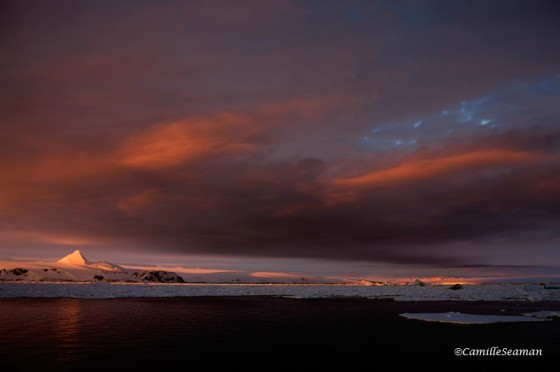
10. Please let us know where we can follow you? If you have a blog we can subscribe to? Do you teach workshops or have tours we can join?
@CamilleSeaman
http://camilleseaman.tumblr.com/
http://www.facebook.com/camille.seaman.5
http://camilleseaman.blogspot.com/
I have to admit I am terrible at keeping a blog going, best bet is to friend me on Facebook, or at least subscribe. I am enjoying tumblr so that works too! I have storm chasing tours coming up and maybe a grand trip taking people to Greenland to hang out with icebergs. Let me know if you want to join me.
Ho…Its just amazing photographs……Hats offf……And the image in your google plus is extra ordinary.And the title’more than a protograph..an experience..Ya its really 🙂 Keep it up.